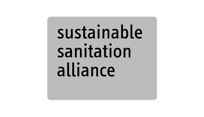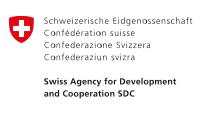Discarded recyclable materials, transformed through crafting and upcycling T.7 into new products and everyday consumer goods, can be sold to generate income.

Consumer goods can be created from waste by transforming recyclable materials into new products. By diverting clean, recyclable waste from disposal sites, this resourceful process reduces the environmental burden and promotes resource conservation. Examples of recycled consumer goods include household items (such as plastic cups and dishes), furniture (such as injection-moulded plastic chairs) and rugs, blankets and clothing made of recycled textiles. The products can be sold to generate income. The approach is particularly relevant in areas with limited access to conventional consumer goods or where waste materials are abundant. Using clean and non-hazardous materials is crucial to ensure the safety and quality of the finished products. Particular attention must be paid to the presence of hazardous materials (such as asbestos) and the prevention of microplastic pollution. The selection and preparation of suitable waste materials are essential steps in this process. Repurposing waste materials fosters creativity and innovation while contributing to economic development and self-reliance in humanitarian and development contexts.
Design Considerations
Several factors should be considered in the design process. The types and quantities of clean waste materials available locally should be assessed, ensuring they meet safety and hygiene standards and are suitable for creating functional and durable consumer goods. Local needs, preferences and cultural appropriateness must be considered in the design process as well as the availability of skilled labour and appropriate tools for working with waste materials. Collaboration with local artisans, designers and community members can enhance creativity and the relevance and effectiveness of the produced goods. Competing with the local consumer material markets must be avoided as this can negatively affect local economies X.5.
Materials
Creating consumer goods with waste materials utilises locally available resources and promotes self-sufficiency. Depending on the product and implementation scale, the tools and machinery required can range from simple hand tools (such as scissors, hammers, saws, sewing machines and adhesives) to heavy machinery such as circular saws, injection moulding machines and extruders. Workers must be trained and protected using suitable personal protective equipment X.4. Not all materials are suited to being transformed into new products due to their chemical-physical properties.
Applicability
Creating and selling consumer goods from waste is suitable for many contexts, especially those with limited access to conventional consumer goods or where waste materials are abundant. This approach is applicable in more stable phases following acute response and through to development, offering a resourceful and sustainable solution for addressing basic needs and generating income. A thorough assessment of the available materials and associated risks is essential to ensure the safety, hygiene and quality of the products; factors such as the availability of materials, community needs, local conditions, local markets, cultural acceptance and skill availability must be considered. This adaptable approach can be scaled from individual household-level to community workshops, promoting self-reliance and stimulating local economies.
Operation and Maintenance
Using waste directly to craft consumer goods requires continuous sourcing, sorting and (potentially) conditioning of the waste. This may require ongoing community involvement and the establishment of collection points; or partnerships with waste management companies or small processing industries producing a specific waste stream of consistent quality, reliably unmixed with other materials. The crafting process requires the use of skilled labour or training. Regular inspection and maintenance are essential to ensure the quality and longevity of the products and manufacturing tools. The workforce size depends on the project's scale and complexity. Some solutions, such as repurposing plastic bottles, are straightforward, while others may require more in-depth knowledge. Common pitfalls include poor material selection, limited product lifespan, inappropriate techniques and lack of maintenance, compromising safety, stability and durability.
Health and Safety
To ensure the safety of both the producers and users of consumer goods, the further spread of waste must be prevented; used waste items and waste-based materials must be clean and free from contamination; hazardous materials W.2 must be avoided. During production, workers must be equipped with suitable personal protective equipment X.4. Training in occupational safety and production techniques is essential and must include the particular risks of hazardous materials and the public health and environmental risks of waste in general. Regular inspections and maintenance at the production site are essential to mitigate potential hazards and ensure the safety of all personnel.
Costs
Utilising waste materials to craft consumer goods can be cost-effective. The repurposing of existing resources is typically cheaper than buying virgin materials, provided that the items made from waste materials are of a comparable quality to virgin materials. The total expenditure is influenced by several factors, including the scale and complexity of the project, the availability and suitability of local waste management infrastructure and the labour requirements. While using waste materials can reduce material costs, it may lead to increased training needs and corresponding costs. However, utilising waste materials has advantages beyond financial gain, such as waste reduction and income generation opportunities.
Social Considerations
The utilisation of waste materials to craft consumer goods may encounter cultural barriers or prohibitions related to waste and its perceived value. Some communities may view waste as unclean or unsuitable for consumer goods. Furthermore, user preferences and habits are a significant factor as individuals may be accustomed to traditional materials and methods. These perceptions can be addressed through educational initiatives that foster awareness and understanding of the potential benefits of incorporating waste materials into new products X.6. Demonstrating the advantages and safety of such consumer goods can facilitate acceptance. It is essential for successful project implementation to consider local capacity, including their skills, knowledge and available resources. Training programmes and knowledge-sharing initiatives can empower communities to adopt and adapt these techniques, enhancing their long-term sustainability and ownership.
Key Decision Criteria
Input Products
Products from Processed Plastic
Response Phase
Application Level
Management Level
Space Required
medium
Technical Complexity
medium
Objectives & Key Features
Repurposing and use of recycled materials
Strength & Weakness
- Reduces waste and promotes resource conservation
- Fosters creativity, innovation and community engagement
- Creates economic opportunities and supports livelihoods
- Requires access to suitable waste materials and tools
- May face challenges in terms of quality control and standardisation
- Requires ongoing training and skill development to ensure product safety and quality






